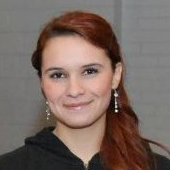Project Setup
The goal of the research project was to discover key directions, requirements, and design opportunities, as well as to develop an understanding of what it means to design for younger audiences. To achieve this goal, I decided to concentrate on exploring the following topics:
- teenagers’ daily lives—whether in school, at work, or on weekends
- life changes from middle school to high school to college
- the evolution of social groups and communications
- time management
- access to technology and digital devices
- family relations and parental support or restrictions, according to age and gender
- their communication needs and the tools they currently use to fulfill them
- what they follow—what is on their radar
- their life expectations, dreams, and ideals
- community building and belonging
- events they attend
- products they like and use—brands they follow
- their general needs and behaviors
I wanted to learn about these topics from the teenagers’ viewpoint. To address the challenges of conducting user research with this age group, I decided to leverage my expertise in doing user research with both children and adults and developed an approach to paired interviews that I thought would be suitable for conducting research with teenagers.
So I conducted paired interviews with a group of four girls, between 15 and 18 years of age, who were close friends and lived in the same area. A local mall served as a neutral location. It was a place that all of the participants visited frequently, so made them feel at ease. The entire session lasted for two hours. In addition to the paired interviews, I conducted semi-structured interviews and video self-reporting exercises.
Paired Introductions and Interviews
I invited the girls to have lunch in an open area of the mall. I opened the session with paired introductions. We started with the researchers introducing each other to provide an example, then asked each girl to introduce one of her friends, describing
- her name
- what she’s good at or what she likes
- a funny fact about her
- what she will be like in the future
The paired interviews research method [1] inspired this activity. It applies the concepts behind the pair programming of agile software development practice. [2] The introductions lasted for 15 minutes.
For the next 30 minutes of the session, I used a variation of the paired interviews technique: paired video interviews. We combined elements of paired interviews with the principles of a research method that is commonly used with children: friendship pairs. [4] For this exercise, I asked the girls to interview each other and recorded the interviews with a video camera. These interviews occurred in the presence of the entire group, and the girls were at liberty to ask any questions they wanted to ask, as long as they centered on the topics that I had mentioned earlier.
